This post may contain affiliate links. I only recommend products or services that I personally use or trust, promise!

This is one of the most common side dishes you will see at Korean restaurants and it was a highly requested recipe!
I love love love fish cakes! This is my favorite way to prepare them, although I do also really enjoy fish cakes in my tteokbeokki. This dish is such a life saver on days that I don’t feel like cooking and need a hearty meal before heading into work. I just eat this with a bowl of rice and it is so satisfying.
Eomuk bokkeum is also often called Odeng bokkeum (오뎅볶음). To be honest, I’ve actually never heard the name eomuk bokkeum until I decided to make a recipe video for it. I grew up calling it odeng. I’m not sure if this is a regional thing but my family is from Busan and we say “odeng.”
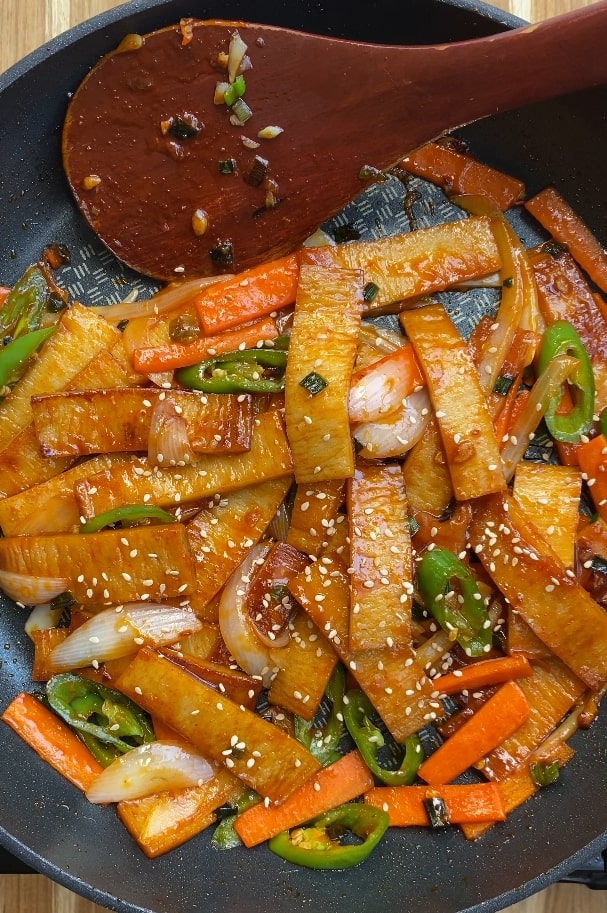
I am going to show you how to make the spicy version, but you can also make this mild by omitting the gochujang and adding more soy sauce instead. I don’t think Korean peppers are particularly spicy, but you can leave those out too if you really don’t like spicy things.
Types of fish cakes:
- For this recipe, I usually use fish cake sheets (see below).
- Fish cakes can also come in other shapes and sizes- fish balls, cylindrical sticks, rounded cakes, etc. You can use all of these! Just make sure you slice them thinly.
- If you can’t find any fish cakes, stay tuned for my fish cake recipe. I am currently working on one made from scratch.
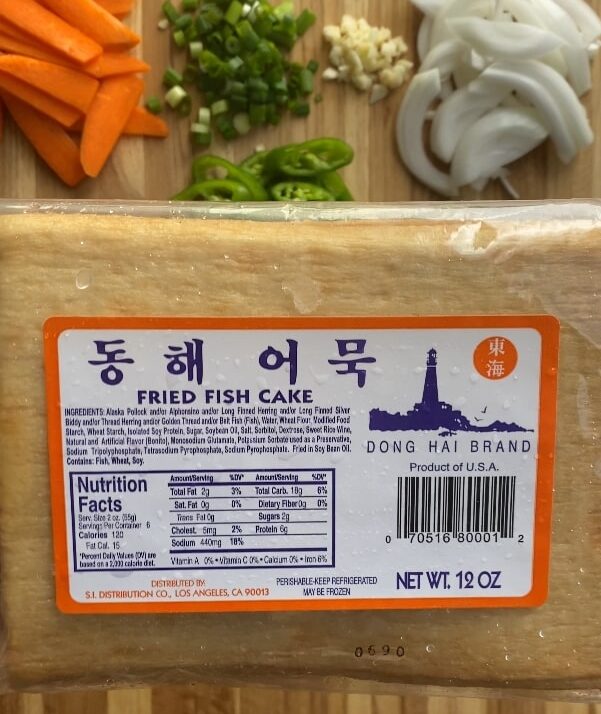
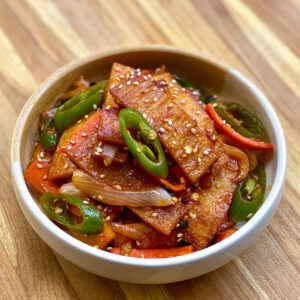
Eomuk-bokkeum 어묵볶음 (Stir fried fish cakes)
Ingredients
- 8 oz fish cake sheet, sliced thinly
- 1/4 cup carrot, sliced thinly
- 1/4 onion, sliced thinly
- 1 garlic clove, minced
- 1 green onion, chopped
- 1 Korean pepper, sliced
- 2 tbsp neutral oil
- 1 tsp sesame seeds
Sauce:
- 1 tbsp soy sauce
- 1 tbsp gochujang (Korean pepper paste), omit for non-spicy version
- 2 tsp mirin
- 1 tsp sesame oil
- 2 tsp rice syrup, or honey
Instructions
- Heat up a pan on low heat with oil.
- Add the green onions and garlic and cook until fragrant.
- Add the fish cakes and stir fry for 1 minute.
- Add the onion, carrot, and pepper. Stir fry for another minute.
- Make a hole in the middle of the pan and add the sauce. Let it bubble up a little and then mix everything together.
- Stir fry for one more minute. I like my veggies to be soft but still have a little crunch to them.
- Top with sesame seeds
Notes
- To make the non-spicy version, just leave out the gochujang. I don't think Korean peppers are spicy at all but you can leave those out too if you want.
- This will last in the fridge for up to 5 days. You do not have to reheat it to serve but you can if you prefer.
Nutrition information is automatically calculated, so should only be used as an approximation.
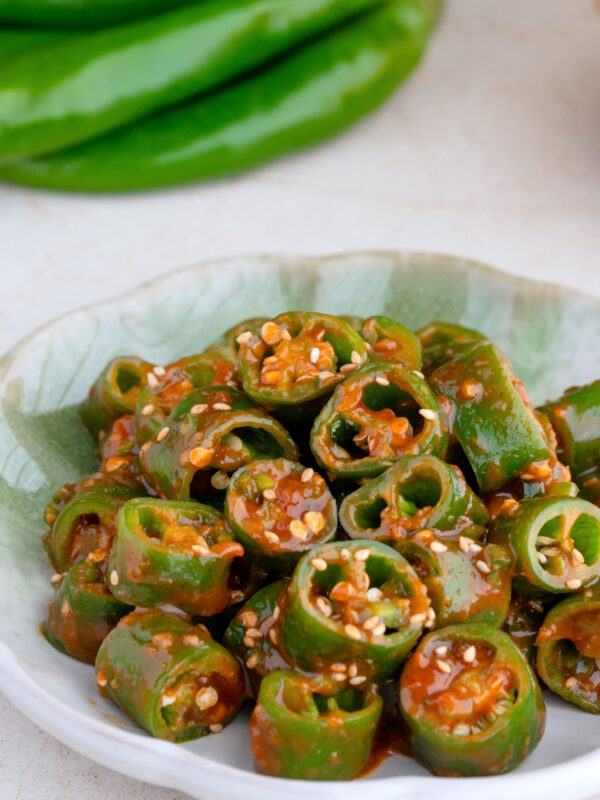
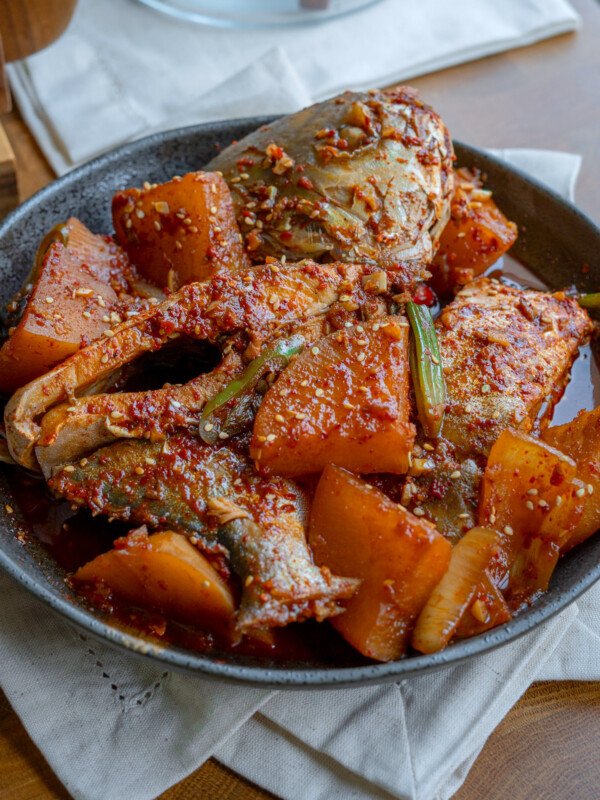
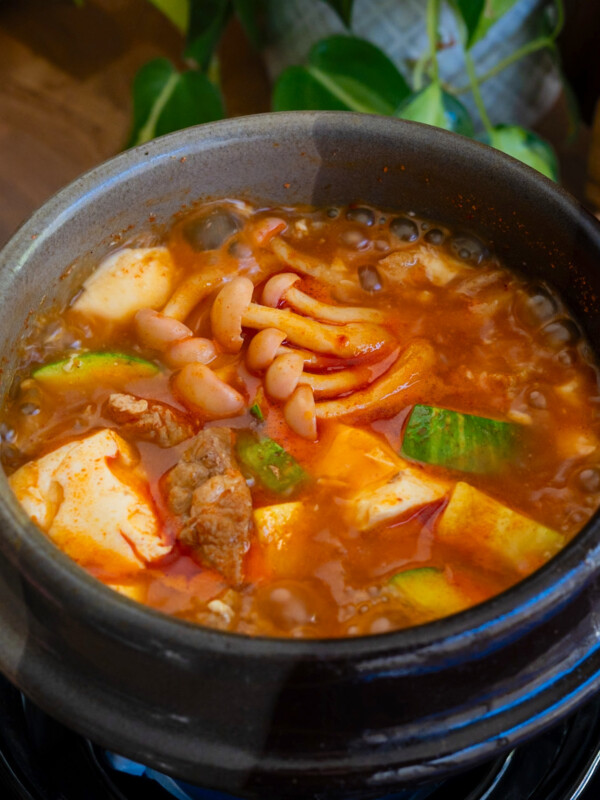
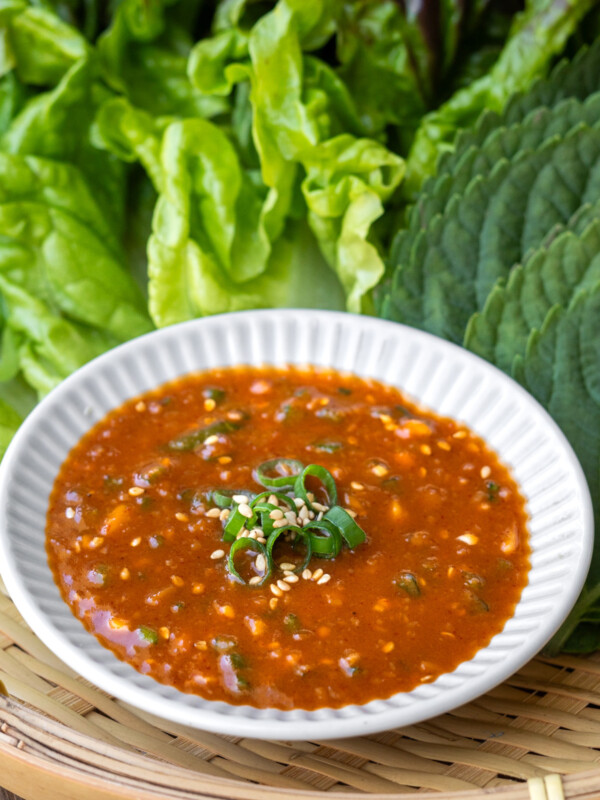







Love this recipe. The kids ask for it all the time.
I usually buy this product at H Mart already made but this is a very simple step-by-step recipe to do it yourself at home at a better price point!
My family loves this dish whenever we go to kbbq. So glad I can make an endless supply for them at home now. It’s such a quick and simple recipe!
I grew up saying “odeng” too! But I think that’s one of those Japanese words that the Korean govt has tried to replace with Korean words. There are a lot of Korean words that are actually Japanese derived from the Japanese occupation of Korea. My parents still say the “Japanese” words and it’s hard to change for me too!